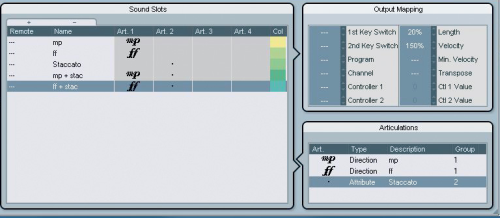Cubase: Using VST Expression
Der Artikel in Sound On Sound beschreibt recht schön, wie man VST-Expression in der Praxis benutzen kann:
[…] Let’s imagine you wanted a phrase to be both staccato (short notes) and fortissimo (relatively loud). If you were using just keyswitched articulation changes, you might need an instrument with three sample layers: one for just staccato, a second for fortissimo, and a third for staccato and fortissimo. However, only the most detailed sample libraries are going to provide this degree of sample layer coverage for all the possible combinations of performance characteristics — and even then, it would eat up a lot of RAM to hold all the layers active.
You could, of course, emulate some of these performance variations via MIDI in the way you play; shorter notes for staccato and higher velocities for fortissimo. While you can do this as part of your performance, you can also add it after the fact via an Expression Map.
The screenshot[…]shows an example where five different performance types have been built from three articulations. In each case, the Output Mapping section has been used to change the MIDI data in real time on playback. For fortissimo (ff), I’ve increased the MIDI velocity to 150 percent of its actual value, while for staccato, I’ve shortened the length of the MIDI note to 20 percent of its actual value. And where both fortissimo and staccato are required, I’ve applied both of these changes.[…]
